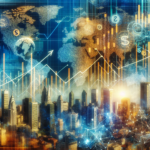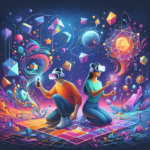Nvidia AI Computing Solutions: Key Insights from Jensen Huang’s GTC 2025 Keynote
Nvidia’s CEO, Jensen Huang, delivered a pivotal keynote at the GTC 2025 conference, showcasing groundbreaking advancements in Nvidia AI Computing Solutions. This event, attended by over 25,000 in-person and thousands more virtually, highlighted significant strides in AI, robotics, and computing. Here are the key insights from Huang’s keynote and an interview with Dion Harris, Nvidia’s senior director of AI and HPC AI factory solutions.
AI at an Inflection Point
Huang emphasized that AI is at a critical inflection point, transitioning from retrieval-based computing to generative computing. This shift will revolutionize how AI systems process and provide information, moving from fetching data to generating answers through reasoning and inference.
The development of agentic AI, which can reason and plan, is driving demand for advanced computing solutions, particularly GPUs. Nvidia’s AI innovations, such as the GeForce RTX 50 Series GPUs based on the Blackwell architecture, are designed to harness AI for improved performance and visual quality.
AI in Data Centers and CUDA-X Expansion
The use of AI in data centers is surging, with top cloud service providers increasing their investments. Huang announced that Nvidia is opening up its cuOpt decision optimization platform, further expanding the reach of CUDA-X libraries across every industry. This move underscores Nvidia’s commitment to providing comprehensive Nvidia AI Computing Solutions for various sectors.
Foundation Models and Robotics
Nvidia introduced several new foundation models, including the Isaac GR00T N1 for humanoid robotics and the Cosmos world foundation models for physical AI development. These models are fully customizable and open, giving developers unprecedented control over AI and robotics simulations.
The partnership between Nvidia, Google DeepMind, and Disney Research to develop the Newton open-source physics engine for robotics simulation was a key highlight. This collaboration aims to enhance robotics by providing complex environments for AI to learn and interact with.
Healthcare and AI Drug Discovery
In the healthcare sector, Nvidia emphasized AI’s role in drug discovery. Kimberly Powell, Nvidia’s VP of healthcare, discussed how large language models and generative AI are being integrated into pharmaceutical R&D platforms. The DGX Spark, powered by the NVIDIA Grace Blackwell platform, offers a compact yet powerful AI computing solution ideal for researchers.
Sapio Sciences and Cadence are integrating Nvidia’s BioNeMo AI frameworks into their platforms to enhance drug discovery processes using advanced AI tools. This collaboration is expected to accelerate the development of new treatments by leveraging AI for molecular modeling and design.
Earth-2 Simulation and Digital Twins
Nvidia’s Earth-2 project aims to create a digital twin of the Earth, simulating climate and weather patterns in unprecedented detail. This initiative combines advanced computing, AI, and simulation tools to model global weather and climate changes. By integrating various data sources and using AI to fill gaps, Earth-2 can provide localized predictions and insights.
Dion Harris noted that Earth-2 is a long-term project, with incremental advancements and regional model development. The collaboration with various companies and agencies to gather data and refine the models is crucial for its success.
Generative Computing and AI Adoption
The shift to generative computing will transform industries, particularly in design and simulation. AI will help streamline processes by generating missing data or augmenting existing assets, rather than relying solely on retrieval-based methods.
According to Harris, this transition will enable new workflows, allowing designers and researchers to explore a wider range of possibilities more efficiently. For instance, AI can enhance 3D graphics rendering by generating parts of images or simulations, reducing computational burdens and the need for large datasets.
Nvidia Partnerships and Innovations
Nvidia’s partnerships, such as the collaboration with GM for self-driving cars, underscore the company’s commitment to Nvidia AI Computing Solutions. The introduction of DLSS 4, which uses AI to generate additional frames in games, and the AI Blueprints for agentic AI, further solidify Nvidia’s position at the forefront of AI innovation.
Key Takeaways from the GTC 2025
- AI Inflection Point: AI is experiencing a significant shift due to advances in reasoning and generative capabilities.
- Robotics and Self-Driving Cars: Humanoid robots and autonomous vehicles are being developed faster thanks to synthetic data and AI advancements.
- Nvidia Partnerships: Collaborations with GM for self-driving cars and with various companies in healthcare highlight Nvidia’s commitment to AI-driven innovation.
- Earth-2 and Digital Twins: Nvidia’s Earth-2 project and digital twin technologies demonstrate the power of AI in complex simulations and data integration.
As the AI landscape continues to evolve, Nvidia AI Computing Solutions and technological innovations like those highlighted at GTC 2025 will play a crucial role in shaping the future of computing and robotics.
Additional Resources:
Nvidia’s New AI Innovations at CES 2025: Explained
Hewlett Packard Enterprise Introduces New Enterprise AI Solutions with Nvidia
Nvidia Deep Learning AI in Healthcare




0 Comments